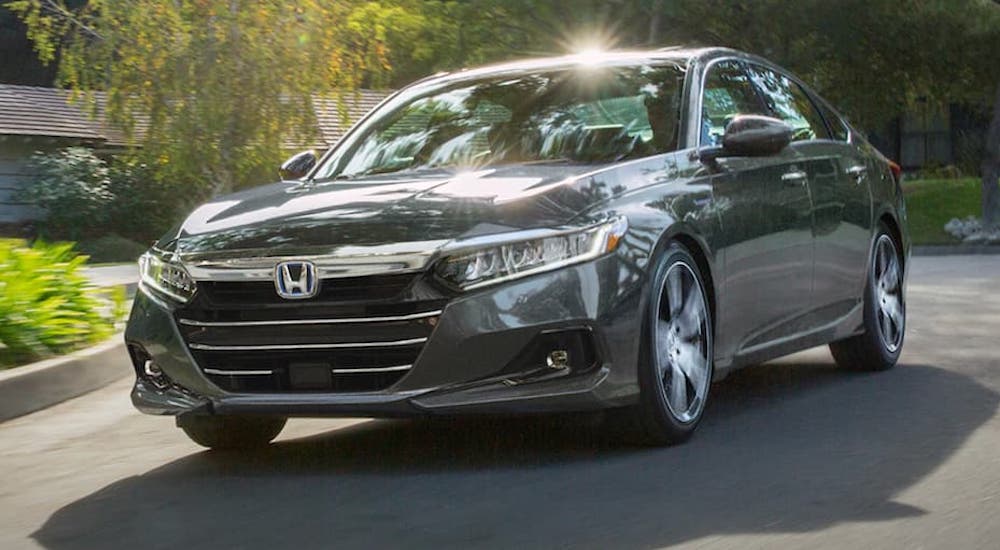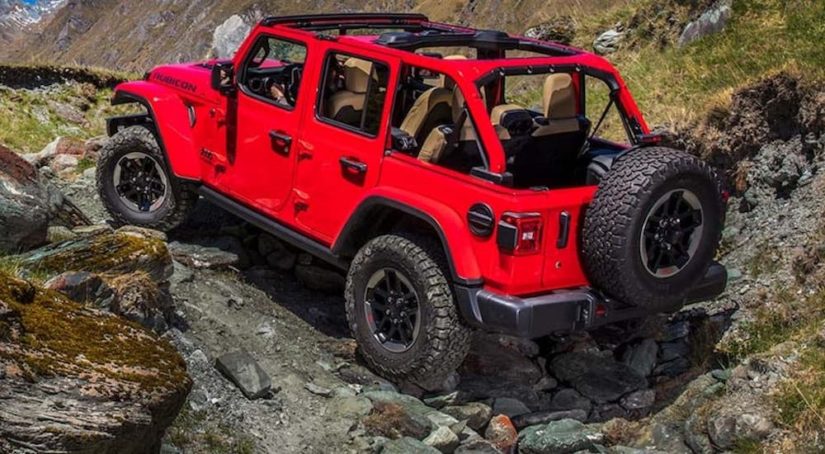Allow me to take you on a brief narrative journey: it’s Saturday night, you and your special someone have just enjoyed a nice evening out, and there’s a certain romantic sparkle in the air that’s let your shoulders relax for the first time in three weeks. At this moment, you think, “Maybe this is the best of all possible worlds.” You glance at each other, and BAM! Your tire blows out, and you’re swerving wildly for a brief moment before you regain control and carefully pull over to the side of the road.
It’s not ideal, but you’re both safe, and you can still salvage the evening––the flat tire can be Monday morning’s problem. You go to your trunk, move around two jackets, a sweater, several water bottles, a couple of boxes full of stuff you keep meaning to donate, and an ice scraper you always forget you have. Finally, you pull open the compartment underneath and find your spare tire––only you don’t. Instead, there’s just a weird box with a hose attached to it. And just like that, the world feels a lot more like what you expect it to be.
More often than not these days, manufacturers are casting aside spare tires in favor of “tire repair kits” that are smaller and potentially much less useful. They’re not completely useless or anything, but they’re not exactly a spare tire either. Fortunately, there are still some models out there with spare tires that you can find when you’re shopping for your next car, but it’s far from guaranteed. Let’s take a look at what you should know about the different types of spare tires and how to shop for a car, truck, or SUV that will actually have one.

Don’t You Spare
First off, let’s take a look at different types of spare tires because they’re not all the same. In general, a spare tire has a single main purpose: to be placed onto one of the axles of your car if one of your standard tires is damaged or otherwise unusable. With that in mind, this can be achieved in quite a few different ways, including:
- Full-Size Matching Spare Tire – This is what you want. It’s the
same size and quality as the tires already on your vehicle. It means you have a full set of five tires, and one just happens to be in your trunk or wherever rather than on an axle. - Full-Size Non-Matching Spare Tire – This is the same diameter as your other tires, but it’s not exactly the same as what you have on your vehicle. Even though it’s a full-size tire, it might not be the same width as your other four tires and is likely not of the same quality. This isn’t ideal, but it’s still a good option overall.
- Full-Size Temporary Spare Tire – These are also full-size tires, but they’re specifically designed only for temporary use. You shouldn’t drive more than about 55 mph on them, and you shouldn’t go more than a fairly short distance on them. Use one of these to get home and then get to a service center or go straight to a tire shop.
- Compact Temporary Spare Tire – Lovingly referred to as “donuts,” these are spare tires that are smaller, lightweight, and designed for minimal use. If at all possible, you really just want to go straight to a service center to get a new tire if this is what you have.
- Folding Spare Tire – Really more collapsible than “folding,” these come with some compressed air or a pump so you can inflate them and install them. They weigh less and take up less space than other spares, but you don’t want to use them very long
In addition to these, you’ll also find vehicles that come with a tire repair kit, as I mentioned before, rather than any kind of spare tire. They can work well to fix a tire with minimal damage to the tread, but if the sidewall is punctured or the damage is too large, then they’re pretty much useless. Not ideal, but potentially better than nothing. Still, whenever possible, you want to get an actual spare tire for your vehicle.
Truth or Spare
The problem, as I see it, isn’t that there are so many different options for spare tires––that makes sense, and there are some legitimate pros and cons between each one. The problem is that vehicle manufacturers are all over the place in terms of what they include with their vehicles. You might find a full-size SUV from a manufacturer that includes a full-size matching spare tire, then look at a midsize model from the same company and only find a compact spare. And finding a comprehensive list of what’s offered out there is even more difficult, so you really need to look at individual models.
Even worse, many manufacturers offer different spare tire options based on the trim level you’re looking at. All Toyota RAV4 models come with a compact spare tire, which is nice, but then you look at something like the Hyundai Kona, and you’ll find a spare tire on trims with front-wheel drive but not on models with all-wheel drive. This is far from unique; if you buy a standard Honda Accord, you’ll find a spare tire, while an Accord Hybrid model will come with a tire repair kit instead.

Spare to Be Stupid
Why the discrepancy between what you can find in different models? The “nice” version of this is that eliminating the weight of a full-size matching spare tire is a good way to reduce overall vehicle weight and boost fuel economy. While that’s accurate, it’s also ignoring the other side of this: it’s cheaper. Including a spare tire costs more money than a repair kit, especially a full-size matching spare, so by eliminating them, manufacturers are able to boost fuel efficiency and keep their costs down. Win/win––for them at least.
I Double-Dog Spare You!
Ultimately, your best bet while shopping for a vehicle is to never take anything for granted or assume that a seemingly common item will be found on the vehicle you’re looking at. Take the time to do the extra research and look at what the vehicle you’re interested in actually comes with, and see if that includes a spare tire. You can’t just go off what you see on some models since it could vary based on trim––though a spare is still pretty much a given on every full-size truck out there. Things can also change from one year to the next, so make sure you’re looking at the details for the make, model, year, and trim you’re interested in.
No matter what you choose, you might also be able to add a spare tire to your vehicle after the fact, regardless of what it came with. Depending on the model you pick, it could still have a compartment that will fit a spare tire, and you can buy one just to make sure you’re covered. Whatever you do, whether your vehicle comes with a spare or you buy one, take some time to learn how to properly use it to replace your tire in case of a blowout or similar emergency. You’re much better off learning that stuff while sitting on your couch rather than desperately thumbing through your owner’s manual or watching a video on your phone by the side of the road in the middle of the night.



